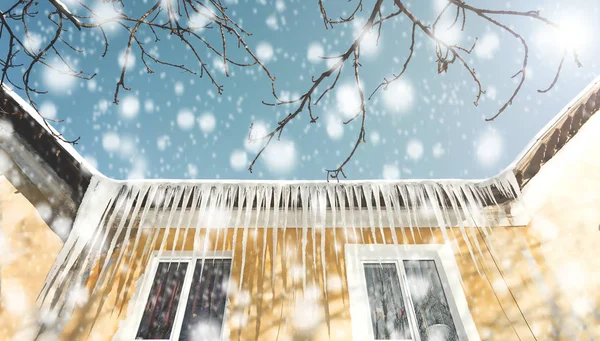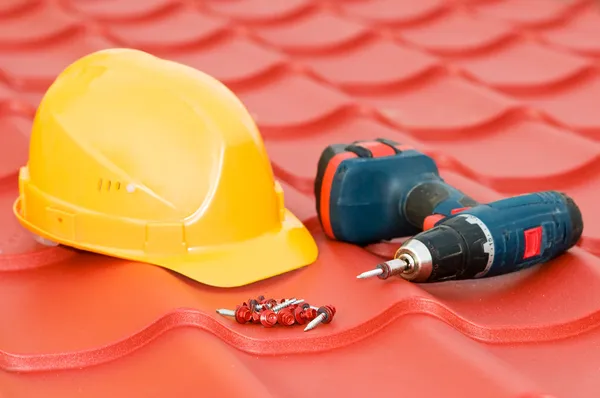An ice dam is a wall of ice that forms at the edge of a roof, typically during cold weather. Ice dams can cause severe damage to roofs, gutters, and attics. They can also create an opening for water to enter the home, leading to mold and mildew problems. It is vital to be familiar with the causes and effects of ice dams so that you can take steps to prevent them.
What Causes Ice Dams?
Ice dams typically form when there is a significant temperature difference between the air inside your attic and the outdoors. Warm air from your home rises into the attic and melts the snow on your roof. As the water runs down the roof, it refreezes when it reaches the colder eaves. Over time, this process creates a dam of ice that prevents melted snow from draining properly.
Several factors can contribute to ice dams, including:
Poor Attic Insulation: Attics should be well-insulated to ensure that warm air doesn’t escape into the attic and melt snow on the roof. If your attic is poorly insulated, consider adding more insulation to help prevent ice dams.
Leaky Ductwork: Leaky ducts allow warm air to escape into the attic and melt snow on the roof. Make sure your ductwork is sealed correctly to help prevent ice dams.
Vents That Are Blocked: Vents should be clear of obstructions to ventilate the attic properly. If vents are blocked by insulation or other materials, they can’t do their job correctly, contributing to ice dams.
A Poorly Designed Roof: Some roofs are more susceptible to ice dams than others. For example, roofs with a low pitch don’t allow snow to drain. If your roof is prone to ice dams, consider having it redesigned or replaced so that it slopes more steeply. This will help prevent water pooling on your roof and eventually create an ice dam.
Clogged Gutters: Clogged gutters can cause water to back up behind an ice dam and leak into your home. Be sure to clean your gutters regularly to help prevent this from happening.
Excessive Heat Loss: If heat is escaping through your ceiling, it can melt the snow on your roof and contribute to forming an ice dam. Ensure your home is well-insulated and draft-proofed so that heat doesn’t escape and cause problems with ice dams.
Improper Drainage: If water isn’t draining away from your home correctly, it can pool at the base of your foundation and freeze when temperatures drop. This frozen water can seep into your home through cracks in the foundation or walls and cause problems such as flooding or mold growth.
Ensure your gutters are installed correctly and that downspouts extend at least 5 feet away from your foundation so that water is properly drained away from your home.
What Are the Effects of Ice Dams?
Ice dams can cause physical damage to your home and lead to water infiltration. Here, we will discuss the dangers of ice dams and what you can do to prevent them.
Physical Damage to Your Home
One of the most obvious dangers of ice dams is the physical damage they can cause to your home. Ice dams can cause gutters and shingles to pull away from your home and cause cracks in your foundation. If you have an ice dam on your roof, it is essential to remove it as soon as possible so that it does not cause further damage to your home.
Water Infiltration
In addition to causing physical damage to your home, ice dams can lead to water infiltration. Water seeping under shingles or gutters can cause severe problems like mold and mildew inside your walls or ceiling. Most homeowners insurance policies do not cover water damage, so you must do everything possible to prevent it.
How Can I Prevent Ice Dams?
There are a few things you can do to prevent ice dams from forming on your roof:
- Install heated cables along the edges of your roof. These cables help melt snow as it accumulates, preventing it from refreezing into an ice dam.
- Make sure your attic is well-insulated. This will help keep heat from escaping through your attic (heat loss is a common cause of ice dams).
- Keep your gutters clean and free of debris. Clogged gutters can cause water to back onto your roof, leading to ice dam formation.
- Remove snow from your roof regularly (after every storm). This will help prevent the accumulation of too much snow/ice on your roof.
If you live in an area susceptible to ice dams, taking these preventive measures can save you a lot of time, money, and headaches in the long run. Of course, if an ice dam does form despite your best efforts, it is essential to have it removed as soon as possible so that further damage does not occur.
Trojan Roofing: Top Roofing Services Provider in Indianapolis
Our team at Trojan Roofing is experienced in ice dam removal and prevention. We offer various roofing services, including installation, maintenance, and repair. We work with all types of roofing materials, so we can assist you no matter what kind of roof you have. Contact us today for all your roofing needs in the Indianapolis area.


